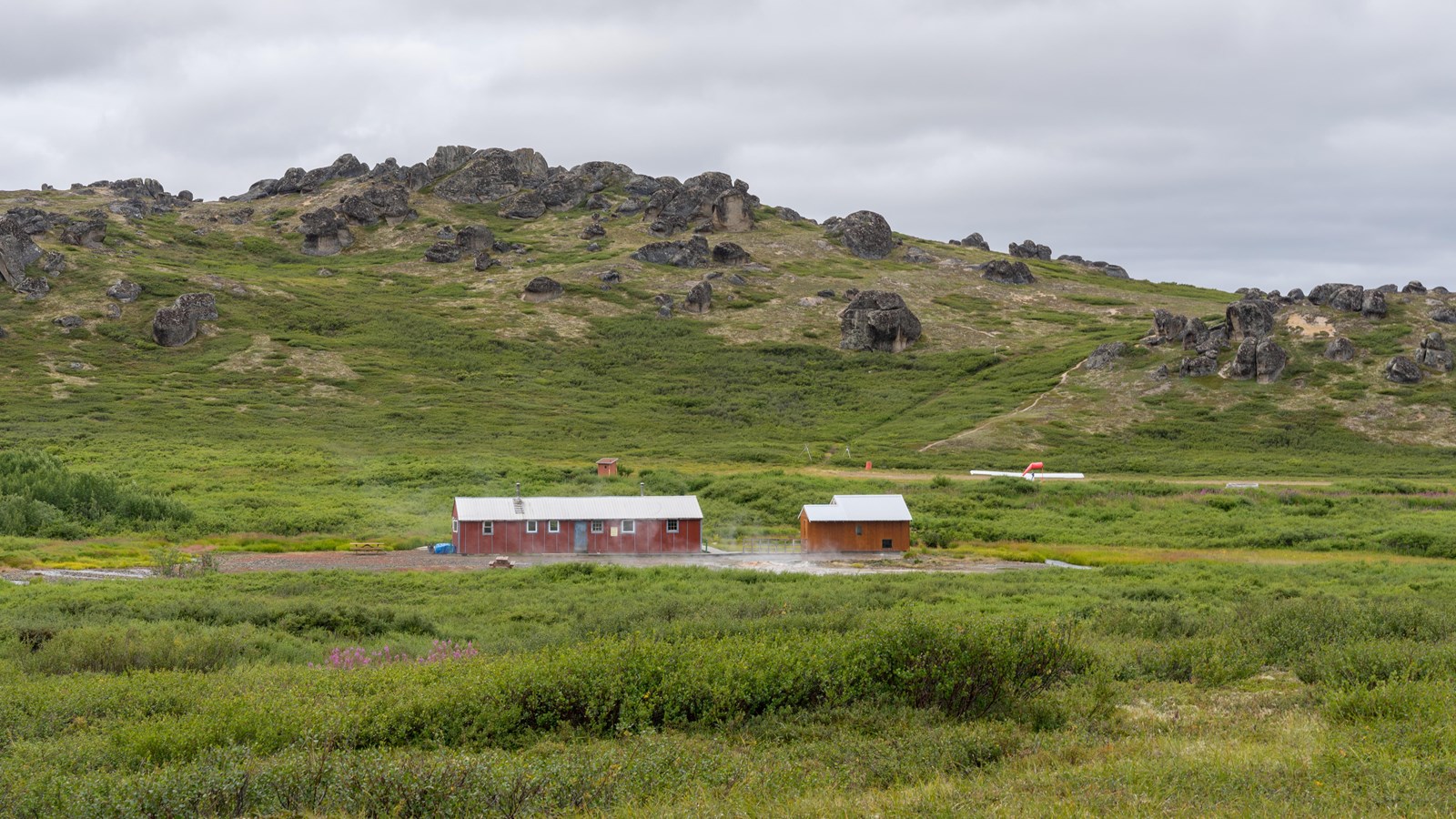Last updated: October 12, 2023
Place
Serpentine Hot Springs: An Overview

NPS - Stephen Lias
Quick Facts
Location:
65.8569N, 164.7142W
Significance:
cultural and geological
Amenities
3 listed
Animal-Safe Food Storage, Information Kiosk/Bulletin Board, Toilet - Vault/Composting
Once described as a “little oasis in a field of green, surrounded by a fence of granite”, Serpentine Hot Springs is a treasure that has been utilized for millennia and continues to service both traditional and recreational purposes.
Serpentine Hot Springs is one of the most visited areas in Bering Land Bridge National Preserve. With a gravel airstrip, hot springs piped into an enclosed bathhouse, and a bunkhouse open year-round, Serpentine offers an accessible way to experience the unique and remote landscape of this region. Frequented by travelers and locals alike, Serpentine is a place of both cultural importance and geological significance. From the Serpentine Hot Springs area, one may observe wildlife, bathe, relax, and hike among the extraordinary granite spires, also known as “tors,” which tower over the landscape. The Inupiaq word for Serpentine Hot Springs is Iyat, which means “cooking pot” or “a site for cooking,” and with one step into this steamy oasis, you can easily see how it got its name. For centuries, the hot springs have been recognized as a place of spiritual healing and tradition, a quality that continues to be valued and respected by all who visit. Serpentine has something different to offer every season. In summer, mild temperatures provide ideal weather for hiking through the tundra. In fall, the slopes are teeming with wild berries and ablaze with brilliant colors. In winter, the bathhouse is a steamy escape from the frigid conditions outside. And in spring, the land is transformed into a rainbow of wildflowers.
One of Serpentine’s most dramatic features are the large granite spires known as tors. Created through volcanic forces causing magma to cool into soft granite underground, erosion slowly scoured away the softer layers and left hard granite monoliths exposed on towering ridgelines. Wildlife including raptors, songbirds, brown bears, caribou, muskox, red fox, beavers, and moose can be sighted by the watchful eye. Hundreds of species of plants, mosses, lichens, and fungi are also found here.
Serpentine Hot Springs is one of the most visited areas in Bering Land Bridge National Preserve. With a gravel airstrip, hot springs piped into an enclosed bathhouse, and a bunkhouse open year-round, Serpentine offers an accessible way to experience the unique and remote landscape of this region. Frequented by travelers and locals alike, Serpentine is a place of both cultural importance and geological significance. From the Serpentine Hot Springs area, one may observe wildlife, bathe, relax, and hike among the extraordinary granite spires, also known as “tors,” which tower over the landscape. The Inupiaq word for Serpentine Hot Springs is Iyat, which means “cooking pot” or “a site for cooking,” and with one step into this steamy oasis, you can easily see how it got its name. For centuries, the hot springs have been recognized as a place of spiritual healing and tradition, a quality that continues to be valued and respected by all who visit. Serpentine has something different to offer every season. In summer, mild temperatures provide ideal weather for hiking through the tundra. In fall, the slopes are teeming with wild berries and ablaze with brilliant colors. In winter, the bathhouse is a steamy escape from the frigid conditions outside. And in spring, the land is transformed into a rainbow of wildflowers.
One of Serpentine’s most dramatic features are the large granite spires known as tors. Created through volcanic forces causing magma to cool into soft granite underground, erosion slowly scoured away the softer layers and left hard granite monoliths exposed on towering ridgelines. Wildlife including raptors, songbirds, brown bears, caribou, muskox, red fox, beavers, and moose can be sighted by the watchful eye. Hundreds of species of plants, mosses, lichens, and fungi are also found here.
